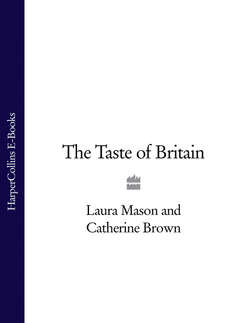Читать книгу The Taste of Britain - Hugh Fearnley-Whittingstall - Страница 252
HISTORY:
ОглавлениеThe earliest reference to the distinctive shape known as a ‘cottage loaf’ cited by the Oxford English Dictionary comes from the 1840s. How long they were made before then is not obvious, although a description by Edlin (1805) makes it clear that loaves of the cottage type were being made. Until the Second World War, they were perhaps the most common shape available in England. In Scotland, they were only occasionally made but when they were, they were flatter and lighter. By contrast, Welsh loaves and those from the Midlands had a closer, cakier texture.
The moulding of a cottage loaf is not easy. Inadequate craftsmanship could make the halves separate or cause alarming tilts and eccentricities. Perhaps this is why Kirkland (1907) noticed that London cottage loaves had smaller topknots.
No complete explanation of the development of the shape is likely. A parallel may be drawn with the shape of pain chapeau, found in the Finistère district of Brittany. The cob loaf was the simplest, round, oven-bottom bread in the English baker’s repertoire. Oven-bottom breads were crustier and more flavourful than loaves cooked in tins (as were most often produced in Scotland, for example, and which became almost universal with the industrialization of British breadmaking). The word cob meant nothing more than a small lump. A similar loaf shape was the coburg, a London form named in honour of the marriage of Queen Victoria to Prince Albert of Saxe-Coburg. This was a cob loaf with extra slashes across the top. The cottage loaf could be likened to 2 cobs piled on top of each other. As it became necessary to increase the output of bakeries in the face of growing demand as England industrialized and urbanized, so a cottage loaf would greatly increase the production of each oven load. It is also possible that the shape was fostered by the availability of fine, high-protein white flour with the advent of roller milling and imports of hard wheat from North America.
